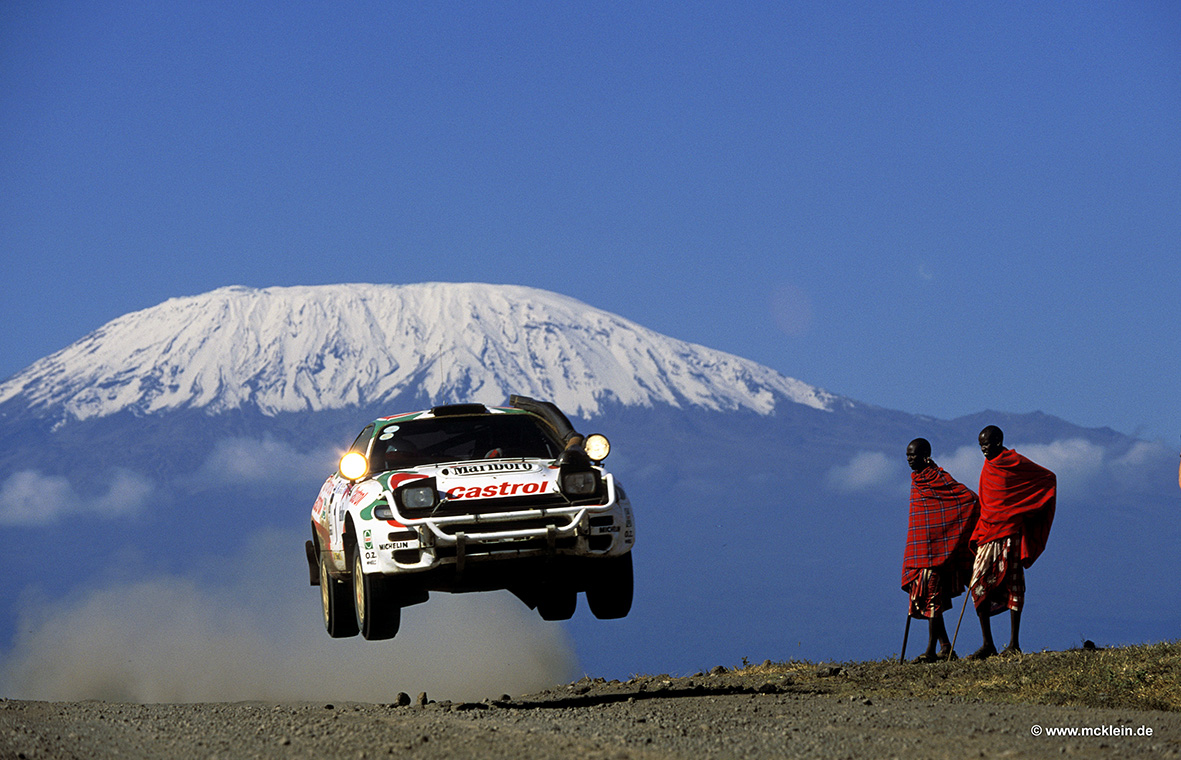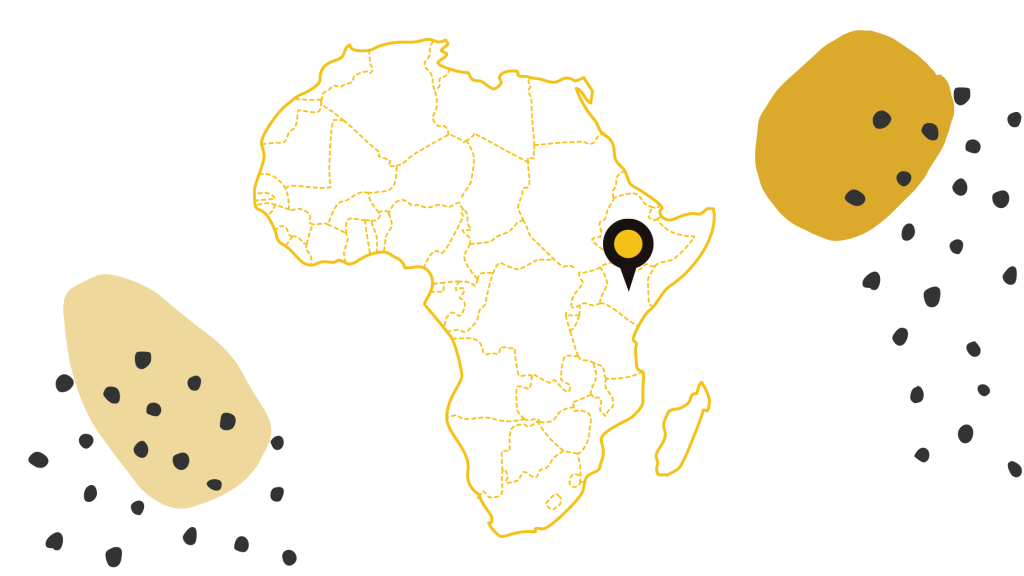
Ask any Kenyan above the age of 30 what their favourite childhood memory was and the Safari Rally would rank right up there. The country would be united over the Easter period as heroes and legends were born during the tough cross-country race.
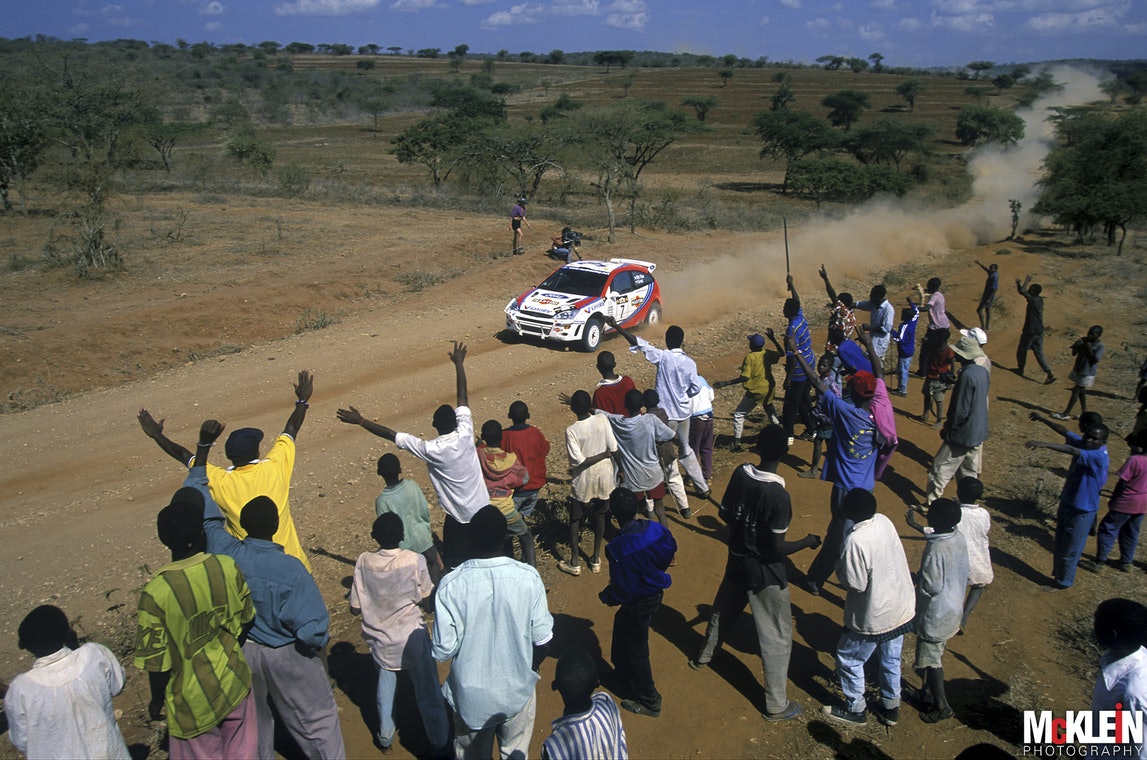
Colin McCrae and Nicky Grist in a Ford Focus in 1999. Rally fever in Kenya was real. Source Reinhard Klein | McKlein Image Database.
Schools and businesses would be closed ‘unofficially’ to ensure everyone watched the spectacle, and if the race happened to pass through your region the excitement would go through the roof. Names like Joginder Singh, Shekar Mehta, Juha Kankunen, Carlos Sainz, Colin McRae, Tomi Makinen, Patrick Njiru, Ian Duncan, Vic Preston and Bjorn Waldegard are forever remembered for their conquests at the event.
What is the Safari Rally?
Dubbed ‘The Greatest Show on Earth’ the Safari Rally was the toughest, roughest and most publicised rally in the world. A single-stage in the event was like a whole race in the European circuit with drivers initially traversing most of East Africa and then Kenya.
The rally started in 1953 as the East African Coronation Rally in honour of Queen Elizabeth II, who’d ascended to the British crown the year before. She’d been in Kenya as part of her royal tour when she learnt of her father’s death, King George IV.
The inaugural winners were Alan Dix and his navigator Johnny Larsen in a Volkswagen Beetle. The founder of the Safari Rally, Eric Cecil – who was a legendary adventurer having won the Nairobi-Johannesburg Rally in 1946 – won the 1956 race and wanted an event that would push the car and driver to the limits of physical endurance.
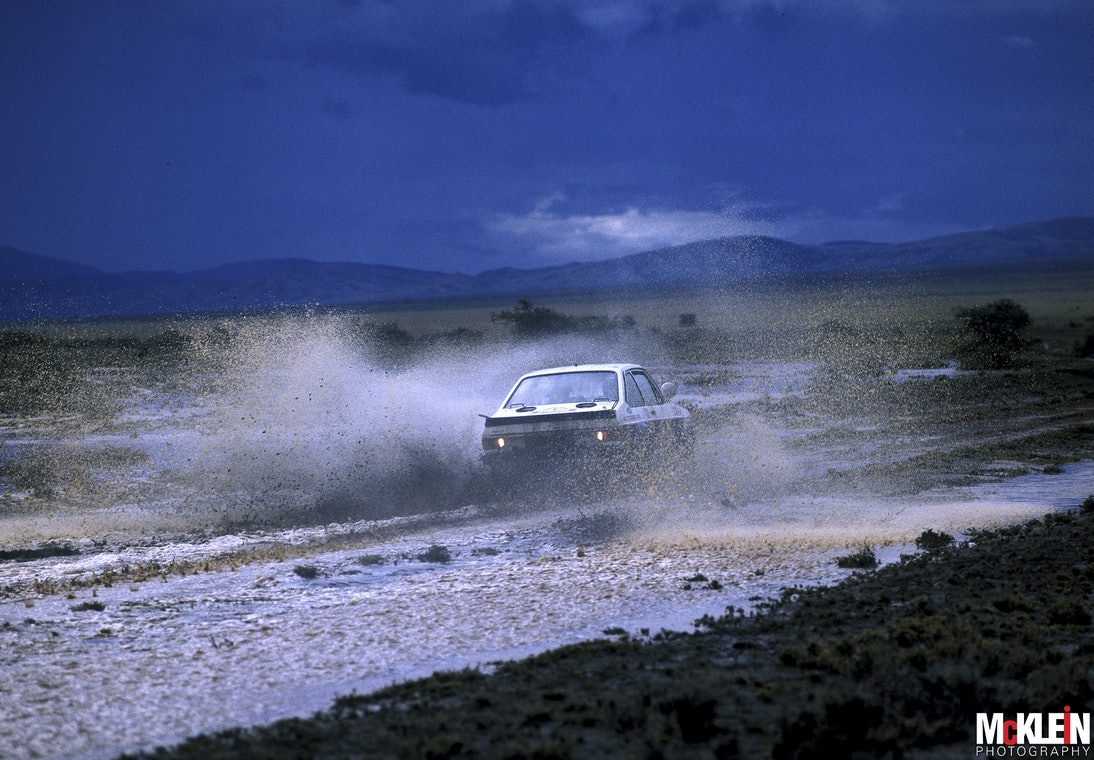
Bjorn Waldegard and Hans Thorszelius on their way to victory in a Ford Focus in 1977. Source Reinhard Klein | McKlein Image Database.
The rally became the East African Safari Rally in 1960 after the coronation fever ended and the independence movement gained momentum across Africa. In 1974, it became the Safari Rally after political disagreements within the East African Community. The rally now became a sole Kenyan affair. Its legendary status grew with more drivers joining and most of them failing to finish the race.
Kenya’s beautiful scenery and wildlife heritage made it a memorable experience with the circuit passing through wild open spaces and public roads full of wildlife. Vehicles would navigate past buffaloes, elephants and cattle. There was the occasional odd accident like Juha Kankunnen hitting a cow and Carlos Sainz colliding with an antelope.
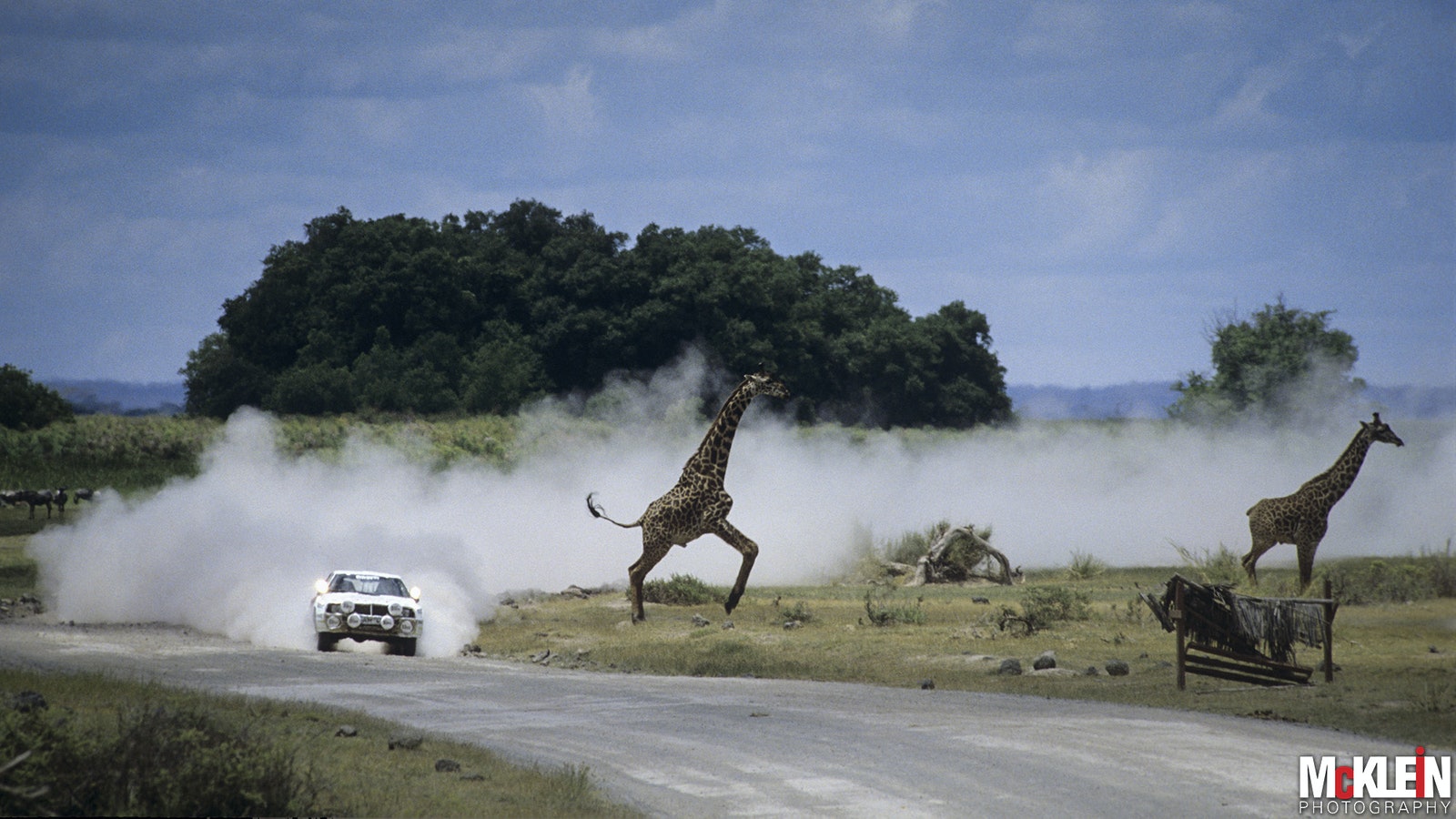
Drivers had to navigate through wildlife, vehicular traffic and cattle. Source Reinhard Klein | McKlein Image Database.
The rally caught the eye of several international drivers and manufacturers and they flooded into Kenya in the 1960s to be part of one of the most publicised sports events in the world. The gruelling nature of the rally meant that a win at the Safari Rally was equated with winning 3 or 4 European rallies.
The Safari Rally became a World Rally Championship (WRC) event in 1973 cementing its legendary status and making it the most popular rally in the calendar. It became a car manufacturer’s marketing dream as winning it would prove that you had the toughest and best car in the world.
Veteran photojournalist and founder of the McKlein Agency, Reinhard Klein captured some of the most iconic images of the Safari Rally, including the one with a Toyota Celica up in the air with Mount Kilimanjaro in the background and Maasai Warriors watching on, covered the event from 1978 to the last one in the WRC calendar in 2002 and has some fond memories.
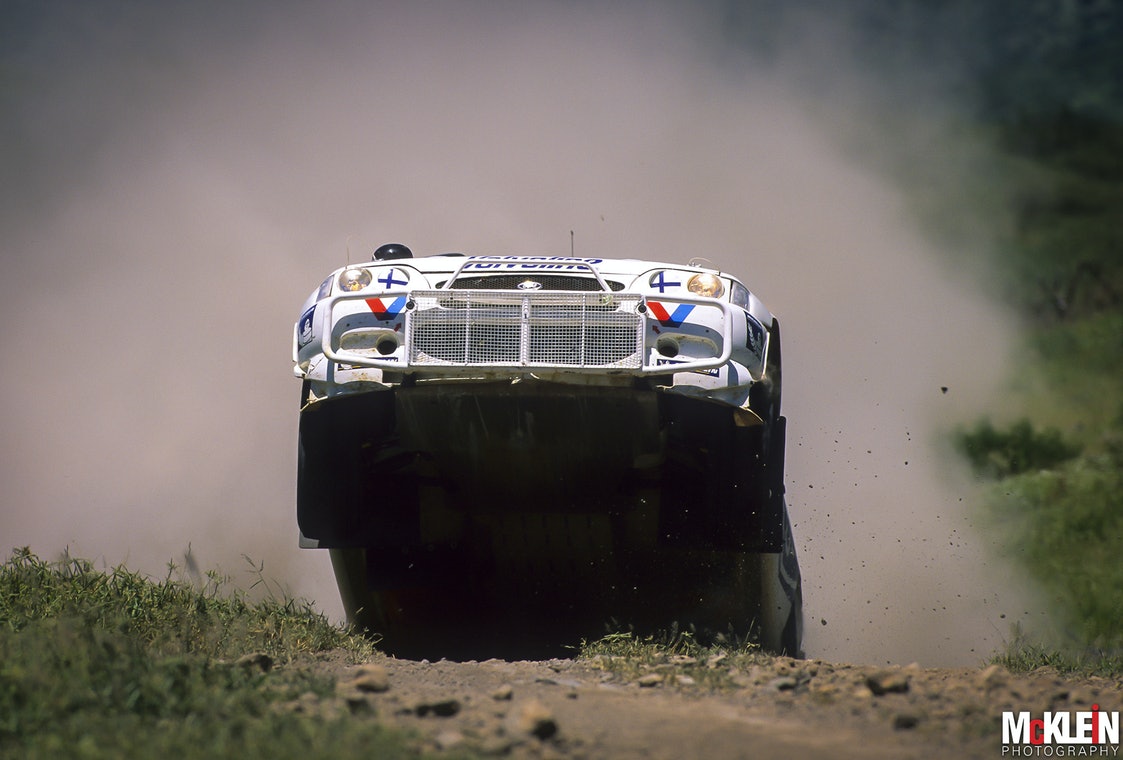
Safari Rally’s tough terrain called for purpose-built race cars. Richard Burns and Robert Reid in a Mitsubishi Carisma GT, 1998. Source Reinhard Klein | McKlein Image Database.
“My first Safari was in 1978. I have done all the WRC events since and all the big nine-day classic events as well in Kenya. From the first one I was very impressed by the possibilities a photographer had as East Africa is a visual paradise and above that the people are incredibly friendly. In 1979, I also came with my wife and she loved it too.
“Then from 1989 onwards we used the Easter school holidays of our kids and they came along as well every year. So it’s great to be back with the WRC although it’s only a tiny rally compared to the past but the drivers will go crazy mad on speed anyway,” says Reinhard Klein.

Carlos Sainz and Luis Moya in their title-winning Toyota Celica in 1992. Source Reinhard Klein | McKlein Image Database.
The first two decades of the event were dominated by local drivers who had the expertise and experience of the terrain. The legendary Kenyan driver, Joginder Singh, won the 1965 event in a second-hand Volvo (that had clocked over 50,000 kilometres before the race) by a margin of over 100 minutes. Dubbed ‘Simba wa Kenya’ or the lion of Kenya due to his exploits, he went on to win the event two more times.
The young Kenyan driver Shekhar Mehta won the event in 1973 and absolutely dominated the event from 1979 to 1982 by winning it four times in a row, defeating better-funded teams and more experienced drivers. He finished fifth overall in the World Rally Championship (WRC) standings in 1981 and is the most successful Safari Rally driver ever.
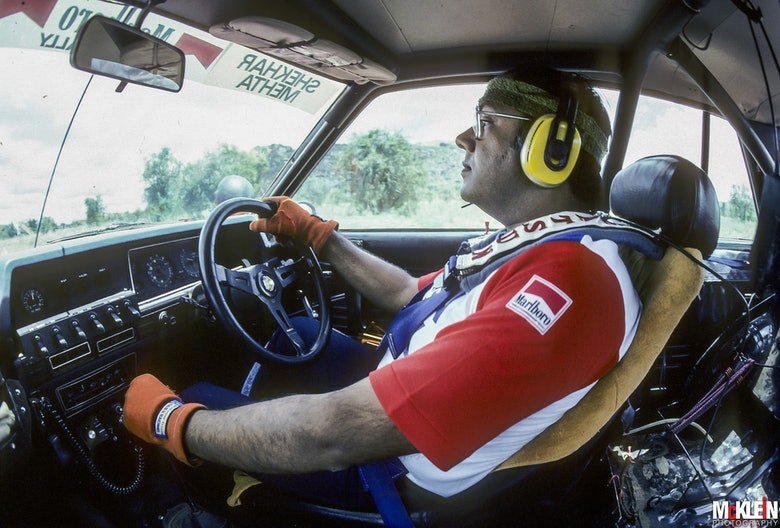
Kenya’s Shekhar Mehta in his event-winning Datsun 160J, winner of 5 past Safari Rally and arguably the greatest rally driver of all time. Source Reinhard Klein | McKlein Image Database.
The first foreigner to win the race was Hannu Mikkola and his co-driver Gunna Palma in a Ford Escort in 1972 just before it became a World Rally Championship event showing the advantage the local drivers had over their more experienced international drivers.
After Shekha Mehta’s last win 1982, the local boys found the going tough and it was an all-international affair until Ian Duncan won the rally in 1994 with his legendary works Toyota Celica. Crowd-favorite Patrick Njiru in his Subaru Impreza finished fourth overall to lift Kenya’s flag even higher.
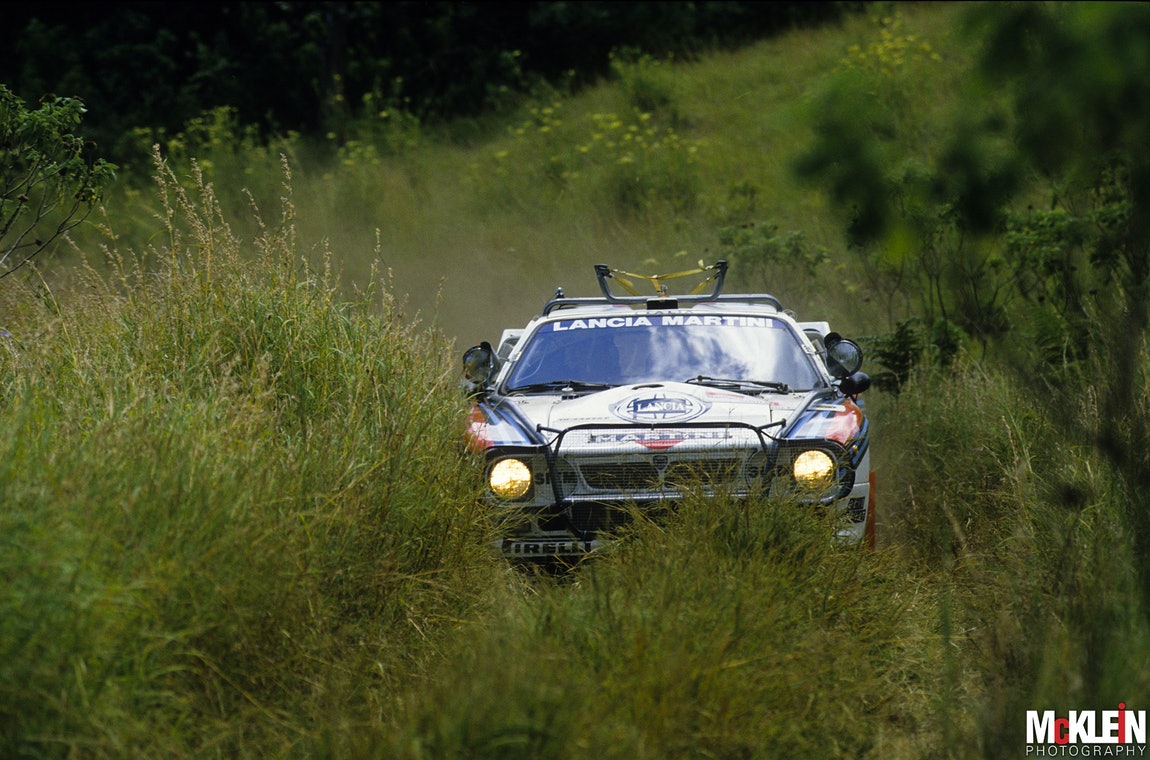
Miki Biaision & Tiziano Siviero in their Lancia Rally on the way to victory in 1986. Source Reinhard Klein | McKlein Image Database.
How difficult was the rally?
Nicky Grist, the late Colin McRae’s co-driver, said that the trick to a great Safari Rally was keeping your car in one shape. Finishing the race was considered a victory, while getting some championship points and winning the race was the Holy Grail. Some considered it better than winning the World Championship.
The weather and terrain played a big part in making the rally the toughest in the world. Routes would be rerouted because of flooding and then the rerouted routes would also be rerouted due to the roads being washed away, but the race had to go on. My Aunt and her fellow villagers waited for two days for the rally cars to pass by her village near Makueni not knowing the route had been changed the previous night due to heavy rains.
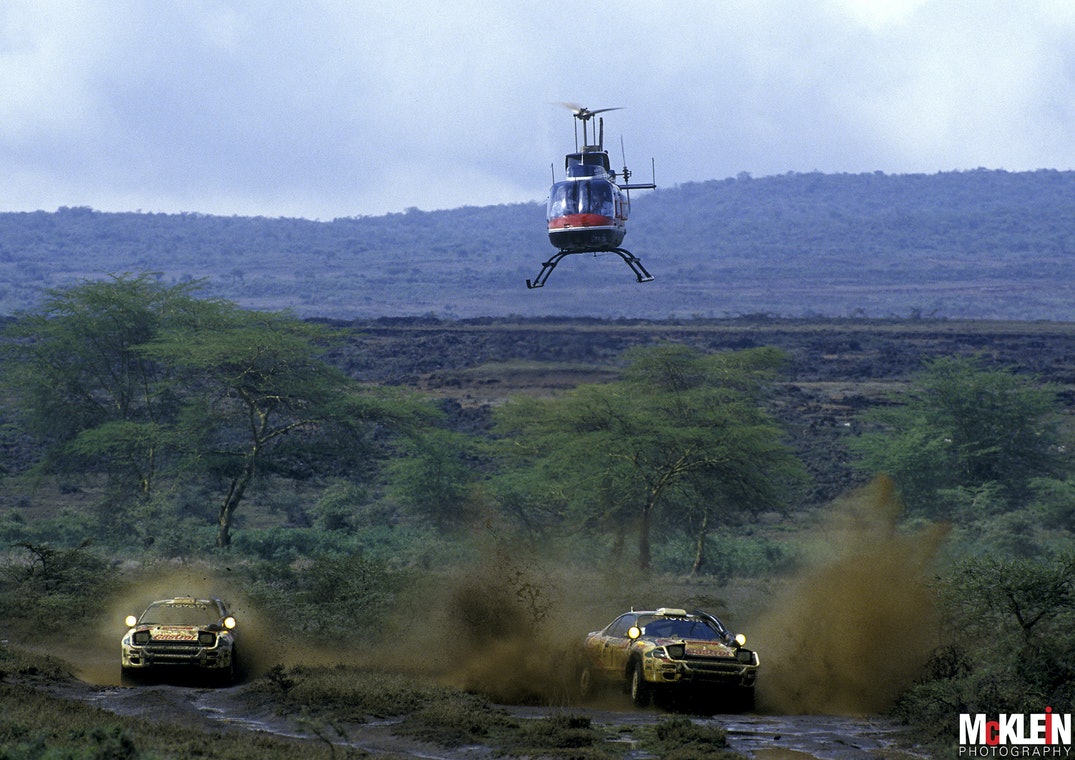
Aerial support for the Toyota Celica’s of Juha Kankkunen and Kenya’s Ian Duncan, the winner of the 1994 event. Source Reinhard Klein | McKlein Image Database.
The rally was held during the Easter holiday which was the onset of Kenya’s short rain season. The rain levelled the field and even amateurs would beat seasoned world champions and better-funded teams. There were no favourites at the Safari Rally unless you were Shekhar Mehta, in my opinion the greatest rally driver ever.
The rate of attrition would sometimes be in excess of 70% of the rally cars as they would suffer multiple breakdowns, get bogged down in mud, dust made visibility poor or sometimes even be swept away by flash floods.
Finnish driver and two-time Safari Rally champion Hannu Mikkola likened overtaking a competitor in the dust as ‘landing an aeroplane blind with only instructions from the control tower.’ Front runners had the advantage of less dust on the routes but even then they were racing on public roads which made it even more difficult.
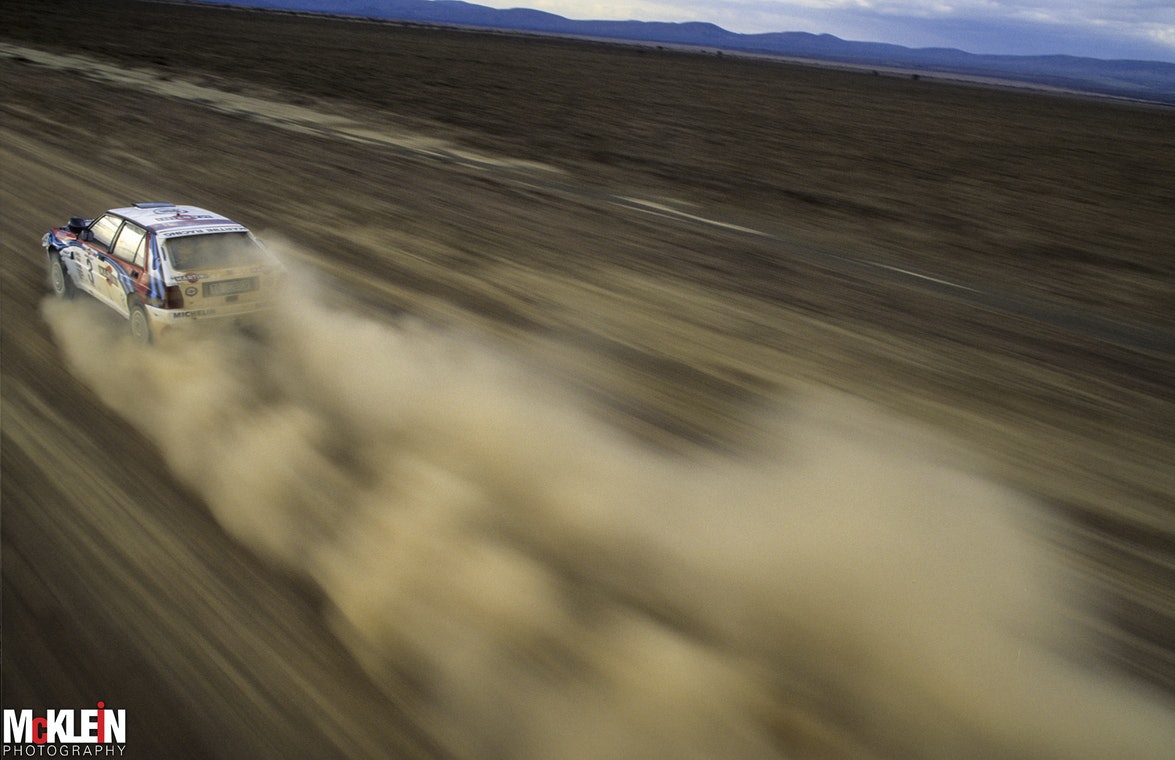
Dust was a threat to rally drivers. Bjorn Waldegard and Fred Gallagher Lancia Delta in 1992. Source Reinhard Klein | McKlein Image Database.
A rock hidden in the dust bowl cruelly robbed Kenyan ace Vic Preston Jr in an Audi a win just 25 kilometers from the finish line, a race that he had led almost from start to finish in 1983.
Teams resorted to using several pace cars to clear the way of crowds of people and wildlife and almost identical chase cars could be cannibalized to repair the rally cars. Helicopters were also used as spotters and to clear the way as well as servicing the rally cars. It was not uncommon to see several team mechanics disembarking from a helicopter with spare parts and repairing the cars.
Two-time World Rally Champion Carlos Sainz remembers getting stuck in mud and losing valuable time before his service team arrived. The crowd of onlookers volunteered to push his vehicle out of the mud if he promised to pay them. He didn’t have any money but they still pushed his car, saving his race.
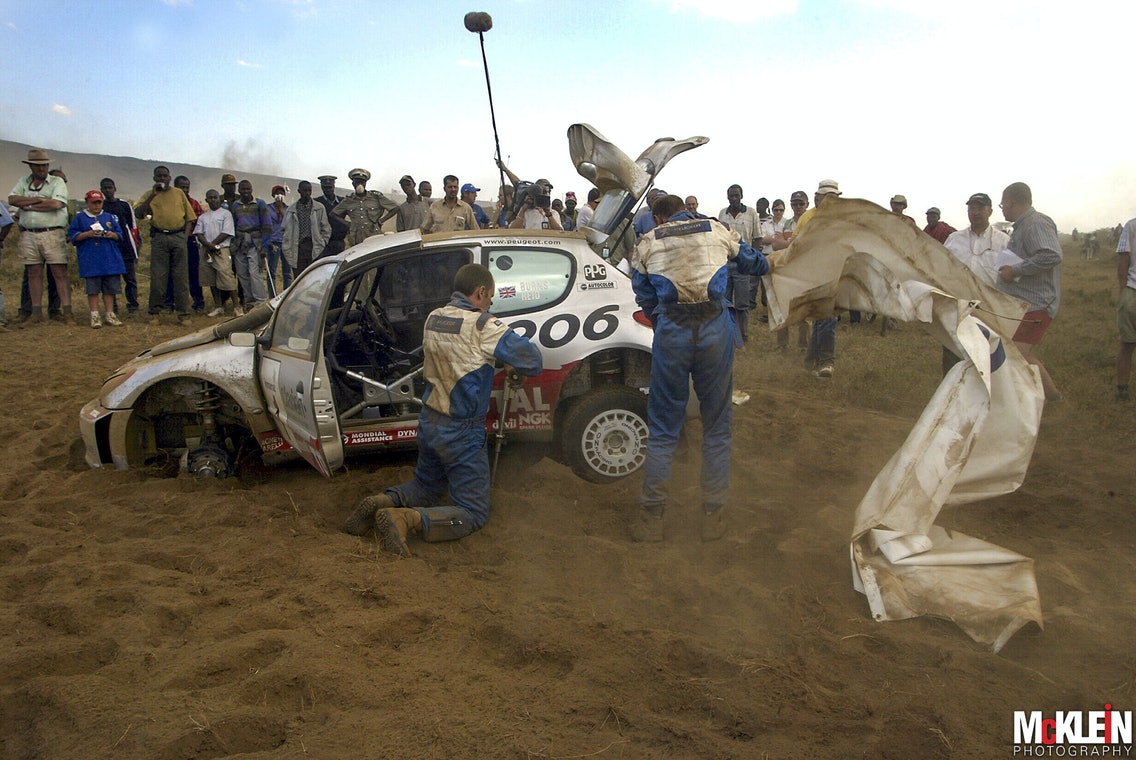
Richard Burns & Robert Reid beached Peugeot 206 in 2002. Source Reinhard Klein | McKlein Image Database.
World Champion and three-time Safari Rally winner the late great Colin McCrae whose mantra was ‘if in doubt then flat out’ said in 1997 that ‘a six-minute lead in the Safari Rally was like a six-second lead in another race’ showing just how time advantages could be overturned quickly due to incidents and weather.
What led to the decline of the Safari Rally?
Although Factory teams resorted to building custom-built vehicles just for the event, pushing the costs higher to them, it was all or nothing at the rally. Racing at the event became more difficult in 1997 after helicopter servicing was stopped meaning there were many more retirements.
The Audi team had their debut in Kenya in 1983 with Kenyan Vic Preston Jr and the legendary French lady ace Michelle Mouton and they brought with them three rally cars, three practice vehicles, three four-wheel-drive cars, six Volkswagen buses, a helicopter, a light aircraft, four retrieval vehicles and dozens of crew members.
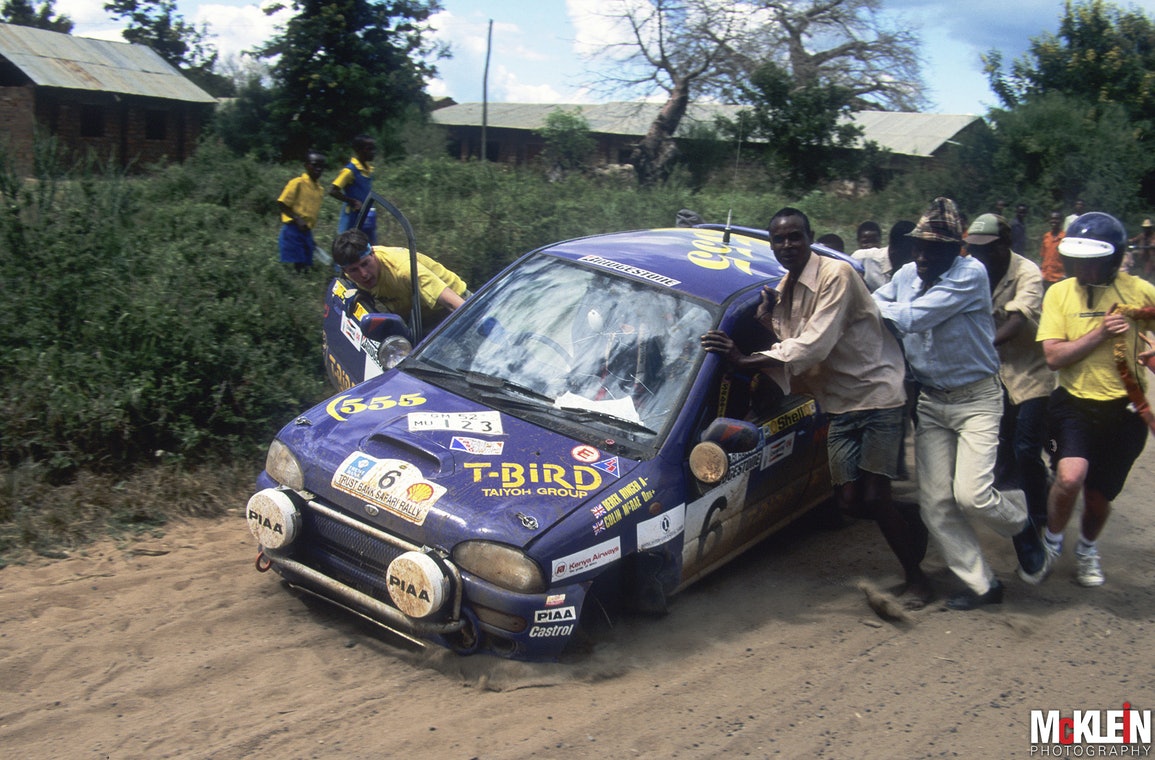
Attrition rate could be as high as 70% of the cars. Colin McRae & Derek Ringer Subaru Vivio in 1993. Source Reinhard Klein | McKlein Image Database.
When Nissan team debuted the Nissan Sunny GTIR rally car at the 1991 event they had 145 staff, 53 support vehicles and two helicopters as part of their logistics team. Although they finished in the top ten it shows how expensive and committed the factory teams were about the event.
To bring the Safari Rally into the modern era, the World Rally Championship decided to discontinue the rally’s cross-country nature and adopt a special stage format in 1996. The event shrunk in size to just three days and to about 2,000 kilometres in length. Moving the event from the traditional Easter holiday to early in the year made it lose home support as well.
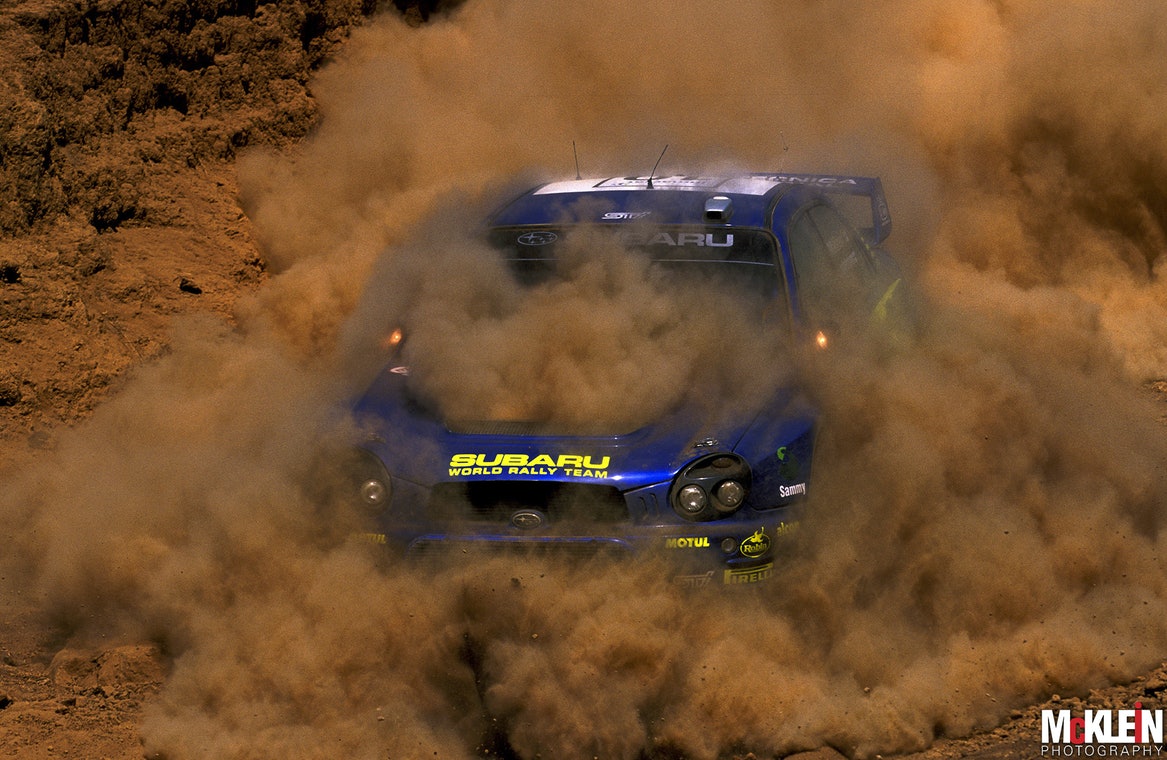
Tommi Makinen & Kaj Lindstrom in Subaru Impreza at the last WRC Safari Rally in 2002. Source Reinhard McKlein | McKlein Image Database.
But lack of an event sponsor meant that WRC had no choice but to drop their most popular event from their international circuit after 30 years and the last international event was held in 2002 and was won by the late Colin McRae and was his last ever win at a WRC event. The World Rally Championship was moving into a smaller, leaner and more efficient era and the Safari Rally was dropped to the less prestigious Africa Rally Championship (ARC) and later the Kenya Rally Championship (KRC).
Back to the World Rally Championship
In November 2017, the Kenya Government legalised the WRC Safari Rally Project, hoping to change it back to the World Rally Championship by 2020. Kenya successfully hosted a FIA Candidate Event and, on September 27 2019, the FIA officially returned the Safari Rally to the World Rally Championship. It was supposed to be held last year, but had to be postponed due to Covid-19 with the new date 24-27th of June 2021.
The head of the media department of WRC Safari Rally Kenya, veteran Kenyan journalist Elias Makori, says government support was key in getting the Safari Rally back after a 19-year absence.
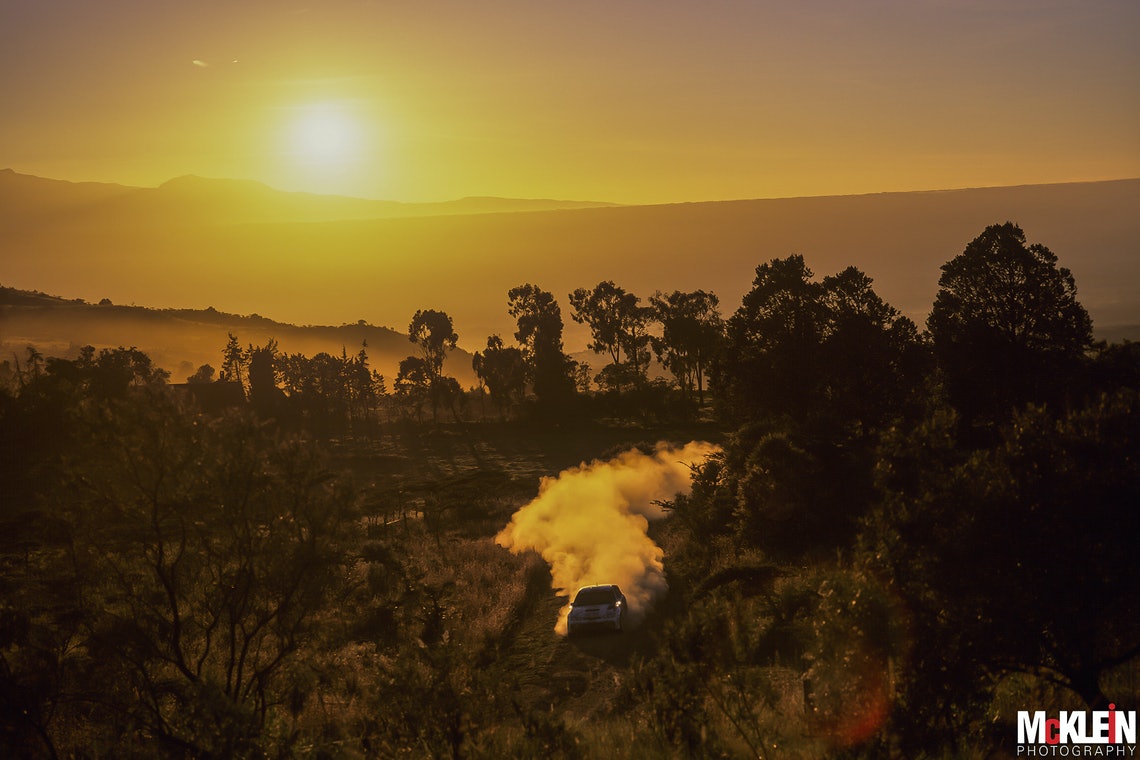
The Safari Rally is a photographer’s dream. Richard Burns & Robert Reid in a Mitsubishi Carisma GT, 1998. Source Reinhard Klein | McKlein Image Database.
“Our Government’s goodwill made this possible after they committed to underwrite the cost of the event of almost 15 million USD to address the issue of lack of sponsors. Safety issues have also been addressed and the rally will be held in a ranch where the only traffic will be the rally cars unlike in the past where they used public roads.”
“This was key in convincing the FIA that Kenya was ready to host the event. They looked at the routes, which were scenic and challenging with a power stage at the Hell’s Gate National Park which is absolutely beautiful. Spectators will also be allowed but under strict Covid-19 protocols,” says Elias Makori.
The route will launch in the heart of the capital city, Nairobi, and continue to the southern shore of Lake Naivasha. Chui Lodge and Oserian, both in the Oserengoni Wildlife Conservancy Estate which is home to lions, leopards, giraffes, antelope and buffalo. Roads further north around Lake Elmenteita host the next stage opening with Elmenteita’s oft-used tracks in the Delamere Estate, followed by Soysambu and Sleeping Warrior, set in the shadow of a hill that resembles a Masai warrior lying down. The finale spans both the north and south sides of Lake Naivasha. The forested Loldia to the north and Hell’s Gate to the south sandwich the rocky Malewa.
“The Safari Rally is a heritage event for Kenya and is a major income-generating activity and we believe 60 million USD will be pumped back into the economy and viewed by millions of people across the world making it a huge marketing event. It is a huge statement that Kenya is open for tourism. We have 59 entries and all the top drivers will be here for the event and all are excited to be participating,” says the veteran journalist.
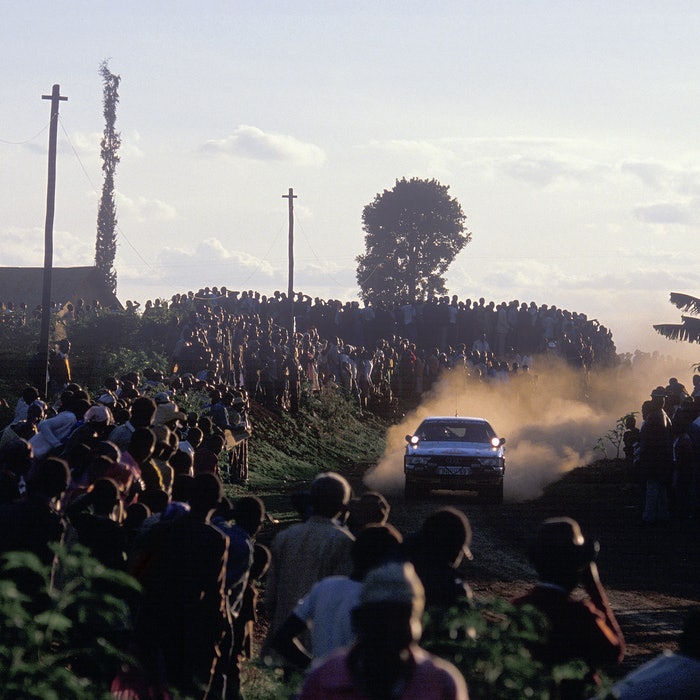
The ecstatic Kenyan fans made the rally special. Hannu Mikkola and Arne Hertz in their winning Audi Quattro, 1987. Source Reinhard Klein | McKlein Image Database.
The era of rally cars with snorkels, extra lights, a spare tire on the roof which was what we were used to seeing years ago is long gone and the route will only be about 320 kilometres long which would have been covered on a quiet morning but the organizers promise that this year’s event will be an exciting and amazing speed fest.
The Safari Rally will be on from 24-27th of June 2021 and you can follow all the action from Kenya on www.WRC.com

